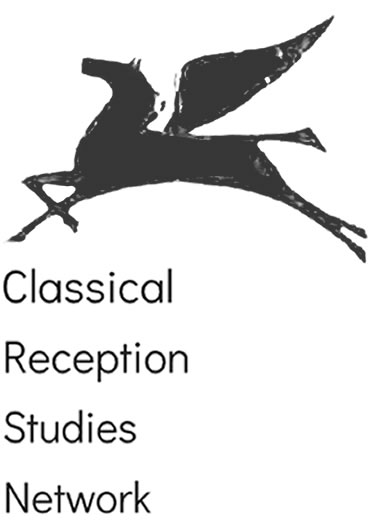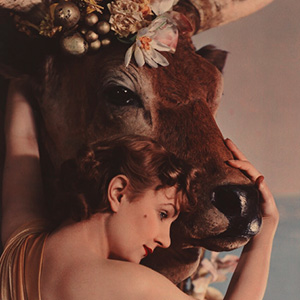In our final post for the Australasian ‘take over,’ we hear from Tanika Koosmen, a PhD candidate at The University of Newcastle, who researches comparative folk narratives concerning the werewolf – a Reception Studies project (see the bio on Tanika from our first ‘take over’ post). But, before we hear from Tanika on a fascinating project undertaken during her Honours year, we’d like to thank the Classical Reception Studies Network, particularly Henry Stead, for the opportunity to present some of the terrific research being undertaken in the Antipodes! — Marguerite and Adam.
Madam Yevonde
Born Yevonde Cumbers to an English middle-class family, Madame Yevonde (1893-1975) was well suited to the life of a high society portrait photographer. Her upbringing influenced much of her future; the costume parties she attended as a youth would hold great sway over her approach to studio photography; her apprenticeship to Lallie Charles, an Edwardian photographer, was likely the result of her family connections; even her first studio was the result of her father’s monetary contributions, in the form of a £250 gift for her 21st birthday.

Her interest in the Suffragette movement led her to speak out about women as independent artists and photographers. In the professional environment, she gave lectures on the role of women in photography and women as portrait photographers to a variety of audiences, including the Second Annual Conference of the Business and Professional Women’s Federation in 1936, and the Professional Photographers Association. Her career was defined by her use of colour photography, as well as her motto: “be original or die,” to which she took great lengths to stay true.
In 1935, Madame Yevonde opened her photographic exhibition, containing 22 colour portraits of high society ladies dressed and posed as figures from classical mythology. These photographs combined the physical requirements of portraiture and the aesthetic elements of Art Deco to form stylised portrayals of Greek and Roman myths. The inspiration for the series was drawn from several places, the most notable being an Olympian-themed ball that took place in London, and several high society guests commissioned Madame Yevonde for portraits of their elaborate costumes, inspiring her to create the exhibition.

The Goddesses series takes advantage of the technological advances in color photography, which suits the Art Deco style, and uses colour to convey the story of the subject without becoming unnecessary or garish. Madame Yevonde’s process involved detailed research and organisation, down to the conceptual representation of each ‘goddess’ in the series. Motivated by receptions of the ancient gods and goddesses, Madame Yevonde presents her Classical figures as glamorous, modern women.
Two of the photographs, Baroness Gagern as Europa and Lady Bridgett Poulett as Arethusa, evoke elements of modernization and classicism in the same frame. In the depiction of Europa, the Baroness is placed in the bottom left corner of the frame, curling her arms delicately around the large bull, his horns decorated with flowers. The drape of the costume is indicative of classical dress, but the model’s makeup conjures a reflection of modernity. Scholars have drawn attention to the balance of props, noting the use of the large stuffed bull to bring the subject to the audience’s full attention. Madame Yevonde uses this to her advantage, making it seem as if Europa and the bull are mid-movement at the moment of capture.

Alternatively, Lady Bridgett Poulett as Arethusa shows us the lengths to which Madame Yevonde could manipulate her subject’s appearance to project the mythical in her photography. In this work, Arethusa’s head is bowed, and her features are in sharp relief, offset by the blurring of her background. The colour tone in this photograph is a greyish-green, and the skin of the model is sickly and pale, depicted as part of an overall underwater aesthetic, which casts the figure as otherworldly. Her hair colour and headpiece provide a striking line of focus through the centre of the photograph, a link to the strong lines of the Art Deco influence.
Madame Yevonde’s career in photography has proven much that the public had once doubted. A pioneer for women in photography and in life, for colour photography and the applications of such, and for individuality and creativity, Madame Yevonde made a significant impact, not only on the photography community, but also on the reception of classical literature and its mythologies in modern times.
To view the Goddesses series, visit the National Portrait Gallery, London, website.

